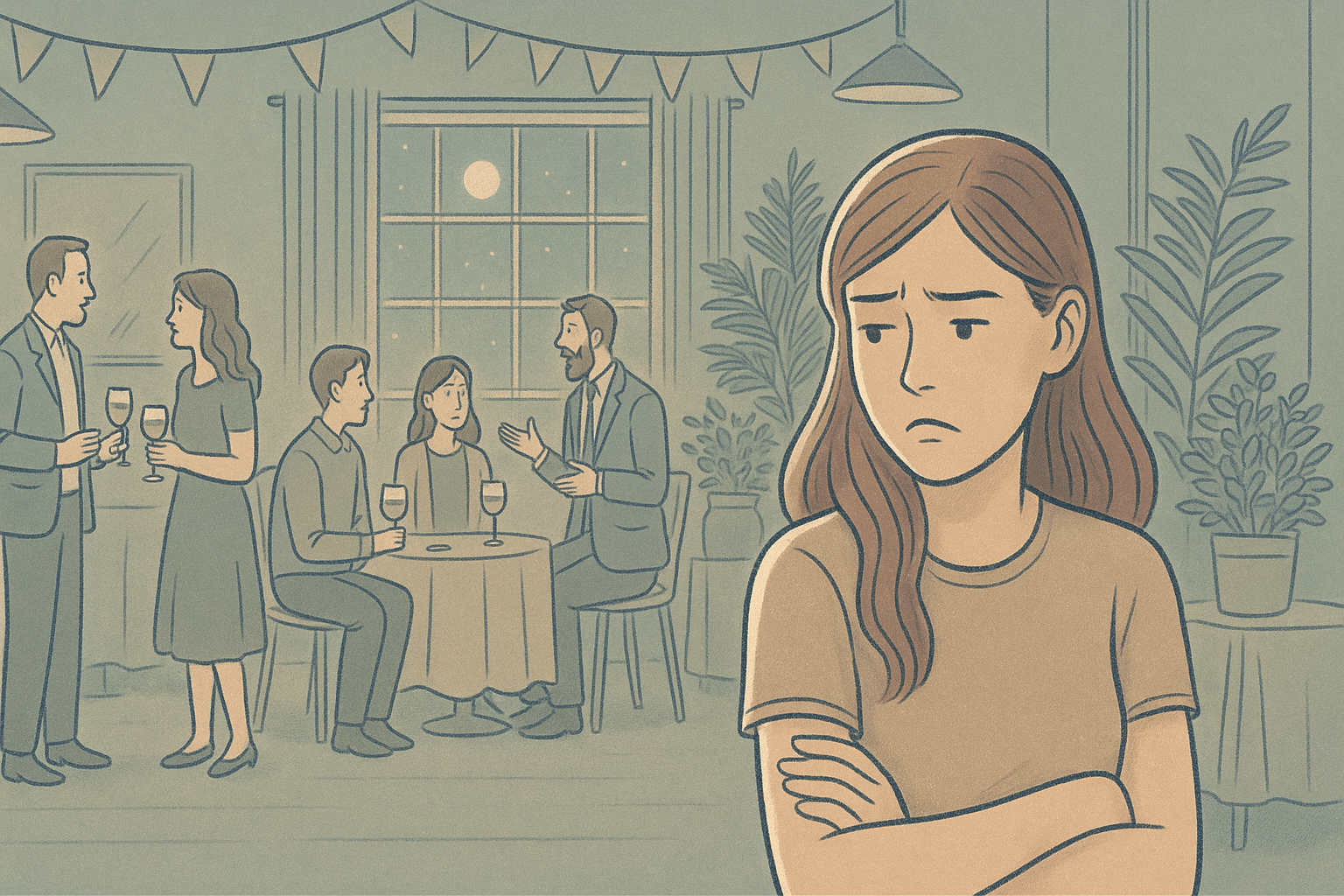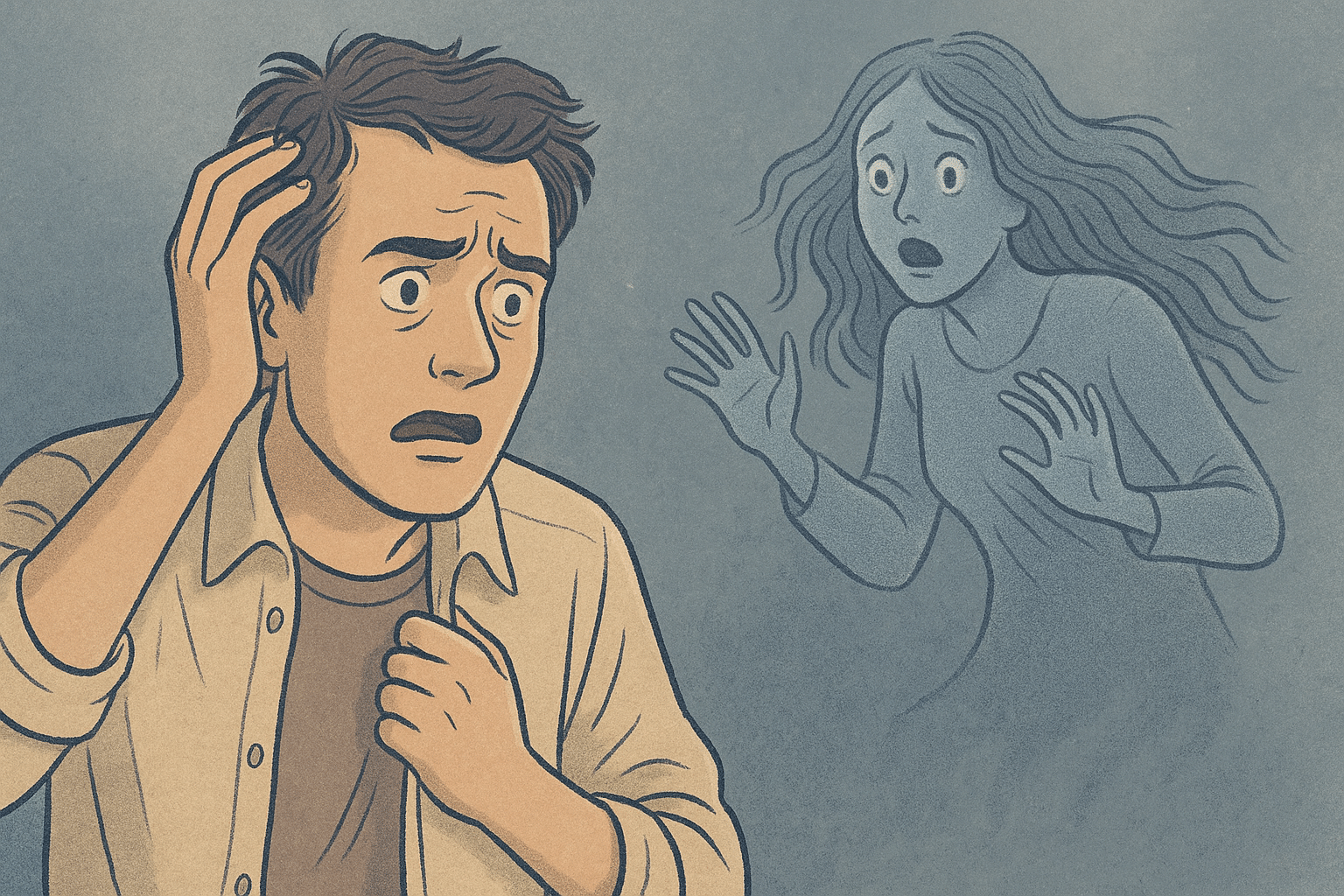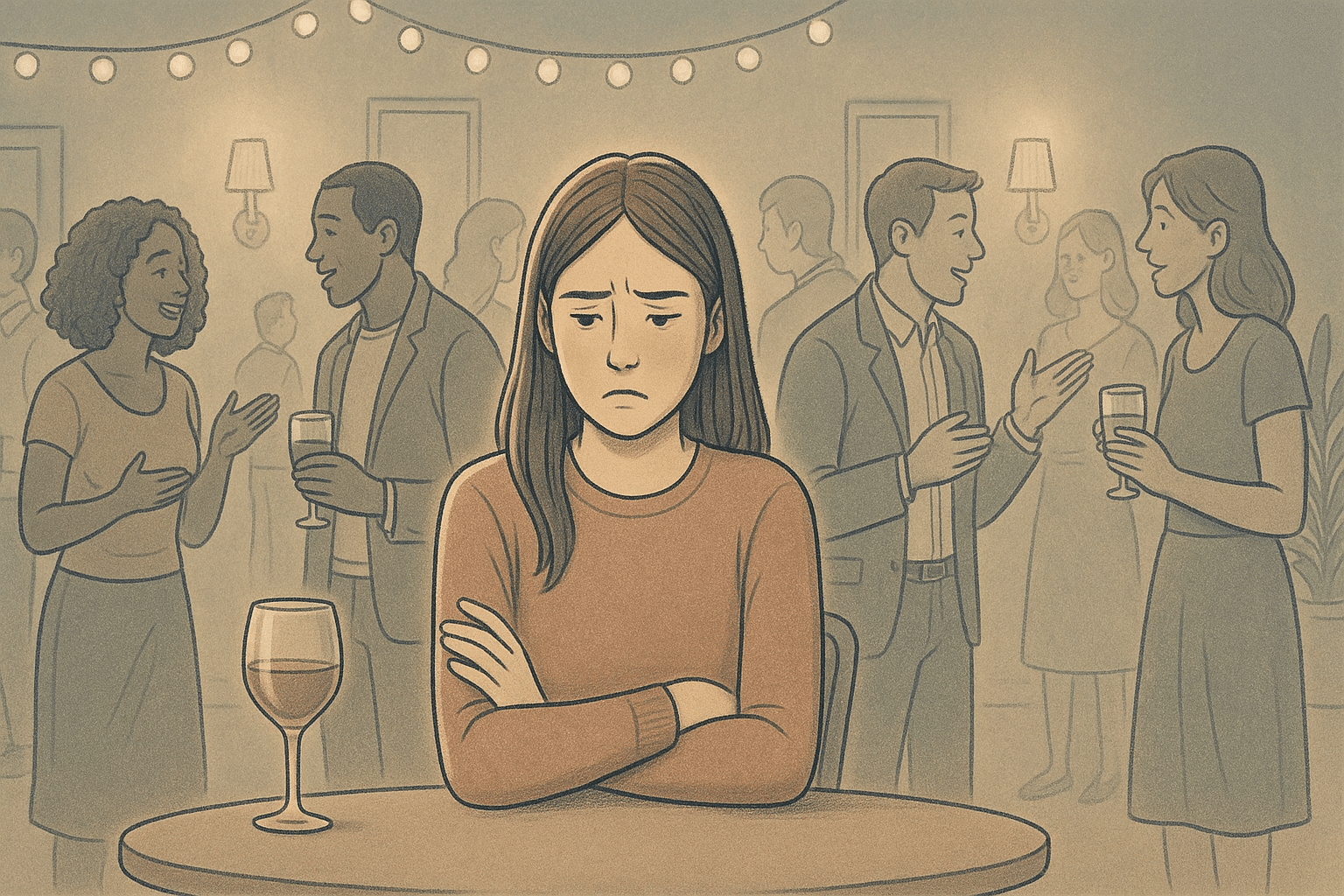Key Takeaways
- Schizoid Personality Disorder (SPD) and schizophrenia are distinct conditions despite similar-sounding names. SPD is a personality disorder characterized by social detachment while maintaining reality testing, whereas schizophrenia is a psychotic disorder involving hallucinations and delusions.
- People with SPD typically don’t experience psychosis or lose touch with reality, while those with schizophrenia often experience both positive symptoms (hallucinations, delusions) and negative symptoms (flat affect, social withdrawal).
- Treatment approaches differ significantly. SPD rarely requires medication and focuses on therapy when treatment is sought, while schizophrenia typically requires antipsychotic medications and comprehensive psychiatric care.
- At A Mission For Michael, our experienced mental health professionals accurately distinguish between these conditions and develop personalized treatment approaches that respect each individual’s unique needs and circumstances.
Schizophrenia vs SPD: Core Differences
The fundamental distinction between these conditions lies in how a person experiences reality. Individuals with schizoid personality disorder maintain intact reality testing; they perceive the world accurately but prefer isolation and appear emotionally cold. In contrast, people with schizophrenia experience significant distortions in how they perceive reality, including hallucinations (false sensory perceptions) and delusions (false beliefs).
Different Disorder Categories
These conditions belong to entirely different categories in psychiatric classification. Schizoid Personality Disorder falls under Cluster A personality disorders, which are characterized by odd or eccentric thinking and behavior patterns that persist throughout adulthood.
Personality disorders represent enduring patterns of inner experience and behavior that deviate significantly from cultural expectations and cause distress or impairment.
Schizophrenia, however, is classified as a psychotic disorder. Psychotic disorders involve disruptions to a person’s thoughts and perceptions that make it difficult to recognize what is real and what isn’t.
Social Withdrawal Reasons
Both conditions can involve social withdrawal, but the underlying reasons differ significantly. In SPD, social withdrawal stems from a genuine preference for solitude and limited interest in relationships. For schizophrenia, withdrawal may result from paranoia, disorganized thinking, or negative symptoms.
| A Mission For Michael: Expert Mental Health Care Founded in 2010, A Mission For Michael (AMFM) offers specialized mental health care across Southern California, Minnesota, and Virginia. Our accredited facilities provide residential and outpatient programs, utilizing evidence-based therapies such as CBT, DBT, and EMDR. Our dedicated team of licensed professionals ensures every client receives the best care possible, supported by accreditations from The Joint Commission and the California Department of Health Care Services. We are committed to safety and personalized treatment plans. Start your recovery journey with AMFM today! |
What Is Schizoid Personality Disorder?
Schizoid Personality Disorder (SPD) is characterized by a strong pattern of detachment from social relationships and a restricted range of emotional expression.

Individuals with SPD typically appear aloof, indifferent to social norms, and uninterested in forming close relationships.
While this might seem similar to introversion, SPD represents a more profound and persistent pattern that significantly impacts a person’s ability to engage with others.
Diagnostic Criteria
According to the Diagnostic and Statistical Manual of Mental Disorders (DSM-5), a diagnosis of schizoid personality disorder requires a persistent pattern of detachment from social relationships and limited expression of emotions, beginning by early adulthood. For a formal diagnosis, a person must display at least four of the following characteristics:
- Neither desires nor enjoys close relationships, including being part of a family
- Almost always chooses solitary activities
- Shows little if any interest in having sexual experiences with another person
- Takes pleasure in few, if any, activities
- Lacks close friends or confidants other than first-degree relatives
- Appears indifferent to the praise or criticism of others
- Shows emotional coldness, detachment, or flattened affect
These traits must represent a significant deviation from cultural norms and cause distress or impairment in social, occupational, or other important areas of functioning.
Impact on Daily Life
Living with SPD affects every aspect of daily functioning, from workplace interactions to family dynamics. People with this condition often prefer jobs that allow for independent work with minimal social interaction.
They may excel in fields like research, technology, or creative pursuits that can be conducted in relative isolation. Social gatherings are typically avoided, and when attendance is necessary, individuals with SPD often remain on the periphery, engaging minimally.
What Is Schizophrenia?
Schizophrenia is a complex, chronic psychotic disorder that affects how a person thinks, feels, and behaves. Unlike SPD, schizophrenia involves episodes where a person loses touch with reality, experiencing hallucinations, delusions, and disorganized thinking.
The condition typically emerges in late adolescence or early adulthood and affects approximately 1% of the population worldwide.
Diagnostic Criteria
According to the DSM-5, diagnosing schizophrenia requires at least two of the following symptoms to be present for a significant portion of time during a one-month period (with some signs persisting for at least 6 months):
- Delusions (false beliefs held with strong conviction despite evidence to the contrary)
- Hallucinations (seeing, hearing, or feeling things that aren’t there)
- Disorganized speech (frequent derailment or incoherence)
- Grossly disorganized or catatonic behavior
- Negative symptoms (diminished emotional expression, avolition, etc.)
Additionally, the condition must significantly impact major areas of functioning, such as work, interpersonal relations, or self-care.
Positive Symptoms of Schizophrenia

Positive symptoms in schizophrenia refer to additional experiences or behaviors that aren’t present in healthy individuals, like hallucinations and delusions.
Hallucinations and delusions are among the most common positive symptoms, with auditory hallucinations (hearing voices) being particularly prevalent. These voices may comment on the person’s behavior, give commands, or engage in conversation with each other.
Delusions, on the other hand, are fixed, false beliefs that persist despite evidence to the contrary. Common types include persecutory delusions (beliefs that one is being harmed or persecuted) or referential delusions (beliefs that random events or objects have special personal significance). These delusions often feel absolutely real to the person experiencing them, making it challenging to engage with reality.
Negative Symptoms
While positive symptoms involve the presence of abnormal experiences, negative symptoms represent the absence or diminishment of normal functions. These symptoms can be particularly debilitating and often persist even when positive symptoms are well controlled with medication.

Negative symptoms present as diminished emotional expression.
Examples of negative symptoms include reduced facial expressions, monotone voice, limited body language, avolition (lack of motivation to initiate or persist in activities), alogia (reduced speech output), anhedonia (diminished ability to experience pleasure), and asociality (reduced interest in social interactions).
Family members sometimes misinterpret these symptoms as laziness or indifference, which can strain relationships and add to the individual’s sense of isolation.
Cognitive Symptoms
Cognitive symptoms represent another core feature of schizophrenia that significantly impacts daily functioning. These include difficulties with attention, concentration, memory, processing speed, and executive functions like planning and problem-solving.
These cognitive challenges can make it difficult to follow conversations, complete educational programs, or maintain employment. Even basic daily activities like grocery shopping or managing medications can become overwhelming when cognitive symptoms are severe.
Why People Confuse These Disorders
Similar Names
The terminology itself creates immediate confusion. Both conditions begin with “schiz-,” leading many to assume they are variations of the same disorder. This naming convention dates back to early psychiatric classification systems when the relationship between these conditions was poorly understood. Modern research has clarified the distinctions, but the confusing nomenclature remains embedded in diagnostic systems.
Media Misrepresentations
Media portrayals of mental health conditions frequently blur the lines between different disorders, particularly those related to schizophrenia. Movies and television shows often depict characters with schizophrenia as having split personalities (actually a feature of dissociative identity disorder) or as being violent and dangerous (a harmful stereotype not supported by evidence). These inaccurate representations reinforce confusion and stigma.
Treatment Approaches Comparison
SPD Treatment Options
Treatment for SPD is often sought only when external circumstances create distress or when the individual develops co-occurring conditions like depression or anxiety.
Many people with SPD are content with their solitary lifestyle and see little reason to change their fundamental personality structure. When treatment is pursued, psychotherapy is the primary approach, with medication generally playing a limited role.
Schizophrenia Treatment Options
Treatment for schizophrenia typically requires a comprehensive, multi-faceted approach. Antipsychotic medications form the cornerstone of treatment, helping to reduce positive symptoms like hallucinations and delusions. Second-generation (atypical) antipsychotics are often preferred due to their more favorable side effect profiles, though finding the right medication and dosage may require trial and error.
Beyond medication, effective treatment includes psychosocial interventions such as Cognitive Behavioral Therapy for psychosis (CBTp), family therapy, social skills training, vocational rehabilitation, and case management. Housing support, peer support groups, and community integration services also play vital roles in long-term recovery.
Side-by-Side Comparison Table
| Feature | Schizoid Personality Disorder | Schizophrenia |
| Classification | Personality disorder | Psychotic disorder |
| Reality Testing | Intact (no hallucinations or delusions) | Impaired (experiences psychosis) |
| Social Withdrawal | Due to preference for solitude | Often due to paranoia or negative symptoms |
| Symptom Onset | Gradual, evident by early adulthood | Often acute onset in late adolescence/early adulthood |
| Primary Treatment | Psychotherapy (when sought) | Antipsychotic medication + comprehensive support |
| Course | Stable throughout life | Often episodic with periods of stability and relapse |
| Functional Impact | May function well, especially in solitary work | Often significant impairment across multiple domains |
When To Seek Professional Help
Recognizing when to seek professional help for either condition can be challenging, particularly since both SPD and schizophrenia can involve social withdrawal that makes the affected individual less visible to others. We believe early intervention leads to better outcomes, especially for schizophrenia, where prompt treatment can significantly impact the long-term course of the illness.
For families concerned about a loved one, understand that forcing treatment rarely works well, particularly for someone with SPD who values independence. Instead, expressing concern compassionately, offering information about available resources, and supporting the person in making their own decision to seek help typically yield better results. Creating a non-judgmental space for conversation about mental health can open doors to treatment that might otherwise remain closed.
Expert Mental Health Care at AMFM
A Mission For Michael’s mental health professionals have extensive experience accurately diagnosing and treating both conditions. We recognize that proper assessment is the foundation of effective treatment, whether addressing social detachment in SPD or managing psychotic symptoms in schizophrenia.

With evidence-based treatments available across our California, Virginia, and Washington locations, we provide personalized care that respects each individual’s unique needs and circumstances.
Our comprehensive treatment approach extends beyond these specific conditions to address co-occurring illnesses like anxiety disorders and depression.
If you’re experiencing symptoms of social withdrawal or schizophrenia, don’t wait for symptoms to worsen. Our compassionate team offers confidential assessments and works with most major insurance providers. Contact A Mission For Michael today to begin your journey toward improved mental health and quality of life.
Frequently Asked Questions
Can someone have both schizoid personality disorder and schizophrenia simultaneously?
While technically possible, it’s relatively uncommon for someone to meet diagnostic criteria for both conditions. When psychotic symptoms are present, clinicians typically prioritize the schizophrenia diagnosis due to its immediate treatment implications. The social withdrawal seen in schizophrenia might resemble SPD traits but would generally be understood as manifestations of the psychotic disorder.
What’s the main difference between these conditions in terms of daily functioning?
People with SPD often function well in solitary work environments and maintain basic self-care, though they appear emotionally distant. Those with schizophrenia typically experience significant impairment across multiple life domains, including work, relationships, and self-care, particularly during active episodes.
Are there genetic links between schizoid personality disorder and schizophrenia?
Research suggests some genetic overlap within the “schizophrenia spectrum,” with relatives of individuals with schizophrenia having higher rates of SPD than the general population. However, the genetic profiles and their interactions with environmental factors likely differ between the conditions, contributing to their distinct presentations.
How early can these conditions be diagnosed?
SPD patterns typically become evident by early adulthood, representing consistent lifelong traits. Schizophrenia symptoms often emerge in late adolescence or early adulthood, with men typically showing symptoms earlier than women. Early intervention is crucial for schizophrenia outcomes.
How does AMFM approach the treatment of these distinct conditions?
At A Mission For Michael, we provide comprehensive assessments to accurately distinguish between SPD and schizophrenia. Our multidisciplinary team develops personalized treatment plans, focusing on coping strategies and social skills for SPD while offering medication management, therapy, and comprehensive psychiatric care for schizophrenia across our California, Minnesota, and Virginia locations.












